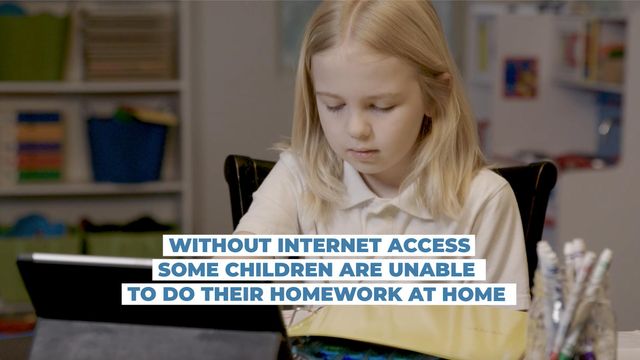Homework, health care gaps persist due to unequal broadband distribution
This article was written for our sponsor, the North Carolina League of Municipalities.
It's a real simple question: if 1-in-10 North Carolina school students lack access to a home broadband connection, what kind of educational and professional limits will those same students face in the future?
That 1-in-10 figure is not pulled from thin air; it's a conclusion reached by a 2019 study conducted by the North Carolina Broadband Infrastructure Office. The study examined North Carolina's "homework gap" and how students are increasingly put at a disadvantage when they cannot connect to the Internet to do homework and study assignments.
This study is one of the N.C. BIO's most recent examinations of the effects of a lack of reliable, fast Internet connection in portions of the state.
N.C. BIO also looked at the same effects on telehealth and economic opportunities in the state. It reached similar conclusions about the urgency of closing access gaps if all North Carolinians are to fully realize the benefits of things like remote healthcare monitoring of patients with chronic conditions or online workforce development tools.
"Government has a role to serve to make sure all citizens have access to basic needs of everyday life, and Internet access right now is a basic need," said Jeff Sural, director of N.C. BIO.
That conclusion comes as the N.C. League of Municipalities and N.C. Association of County Commissioners – the top advocacy groups representing the interests of local government in North Carolina – have made a priority of legislation that would clear legal hurdles to better allow those local governments to enter into partnership arrangements with private Internet service providers to bring better, more reliable service to their residents.
The legislation is currently pending in the N.C. General Assembly.
As a part of the N.C. BIO homework gap study, a survey conducted by the office found, among households without Internet access, 67 percent reported that cost was the number one reason they lack coverage, while 24 percent said high-speed Internet access was not available in their area.
Jeff Pittman, chief information technology officer for Onslow County Schools, believes the reasons why they lack access do not matter.
"When our kids leave our building, they are missing a piece," Pittman said during a forum held in Jacksonville examining the effects of the lack of broadband access in that part of the state. "Our kids are getting home with the devices that we provide with no Internet access … There is a homework gap across our district."
Pittman and Pamlico County Economic Development Director Beth Bucksot, at that same forum, made the point that reliable Internet access has become more crucial than ever when it comes to education because learning has moved online.
"North Carolina has now decided that textbooks should be online. That affects education," Bucksot said.
Pittman pointed out today's students also have become accustomed to learning online, with a computer or electronic device of some kind in their hands.
"I think we all agree that our children do not learn the same way that you and I did when we sat in schools. So, my question then becomes, whose responsibility is it to change?" Pittman asked. "I would argue that it is our responsibility to change and to change the methodologies of instruction to match what our children need. We can't do that without infrastructure in our buildings; and as long as there is not capable infrastructure when the kids walk out of our doors, the homework gap will continue to exist."
As challenging as closing the homework gap may be, digital advances in health care and the growing use of telehealth – remotely connecting patients with health care providers – presents equal difficulties to those providers and patients without good, reliable Internet access.
Increasingly, doctors and other health care providers are able to monitor patients remotely and use Internet connections to treat and conduct appointments with patients.
But in an acknowledgement of how difficult access can be in making telehealth optimal, the Appalachian Regional Commission recently awarded a $100,000 grant to the N.C. BIO and the state Department of Health and Human Services to examine those access challenges in 20 western counties. The year-long study also will look at telehealth opportunities in those counties, but it is significant that the area covered will include some areas with the worst broadband coverage in the state.
"Telehealth is so important, and it's on a lot of people's radar," Sara Nichols, a regional planner with the Land of Sky Regional Council of Governments recently told the Mountain Xpress digital newspaper. "A combination of creativity, collaboration, policy work and funding will be critical to move the needle on this issue. It's exciting to see those things come together."
Bucksot noted that addressing educational, health care and economic needs associated with poor broadband access is more difficult because of the bad data used by the Federal Communications Commissions in which ISPs deem all areas of a census tract served if just one home or business in that tract is actually served.
"We all know that is not accurate," she said. "This is my personal opinion: it is going to take a combination of wireless Internet service providers, mobile tower device upgrades, in-ground fiber infrastructure and public-private partnerships to make sustainable and reliable broadband access come to fruition for most of our under- and unserved areas."
In other words, all entities – public and private – bringing all their resources to the table to address a digital divide whose implications are crucial to the future of all North Carolinians and the areas where they live.
This article was written for our sponsor, the North Carolina League of Municipalities.











